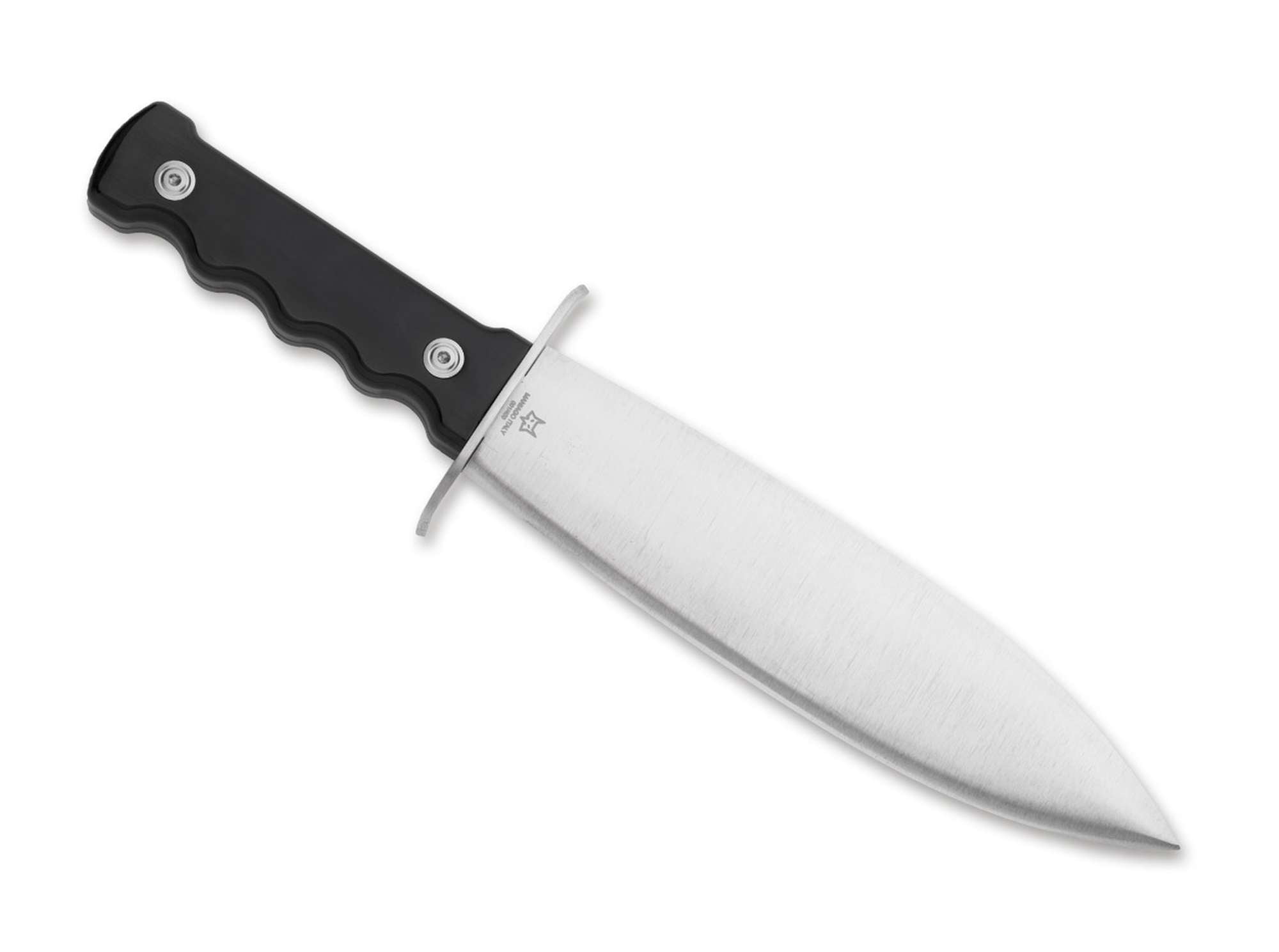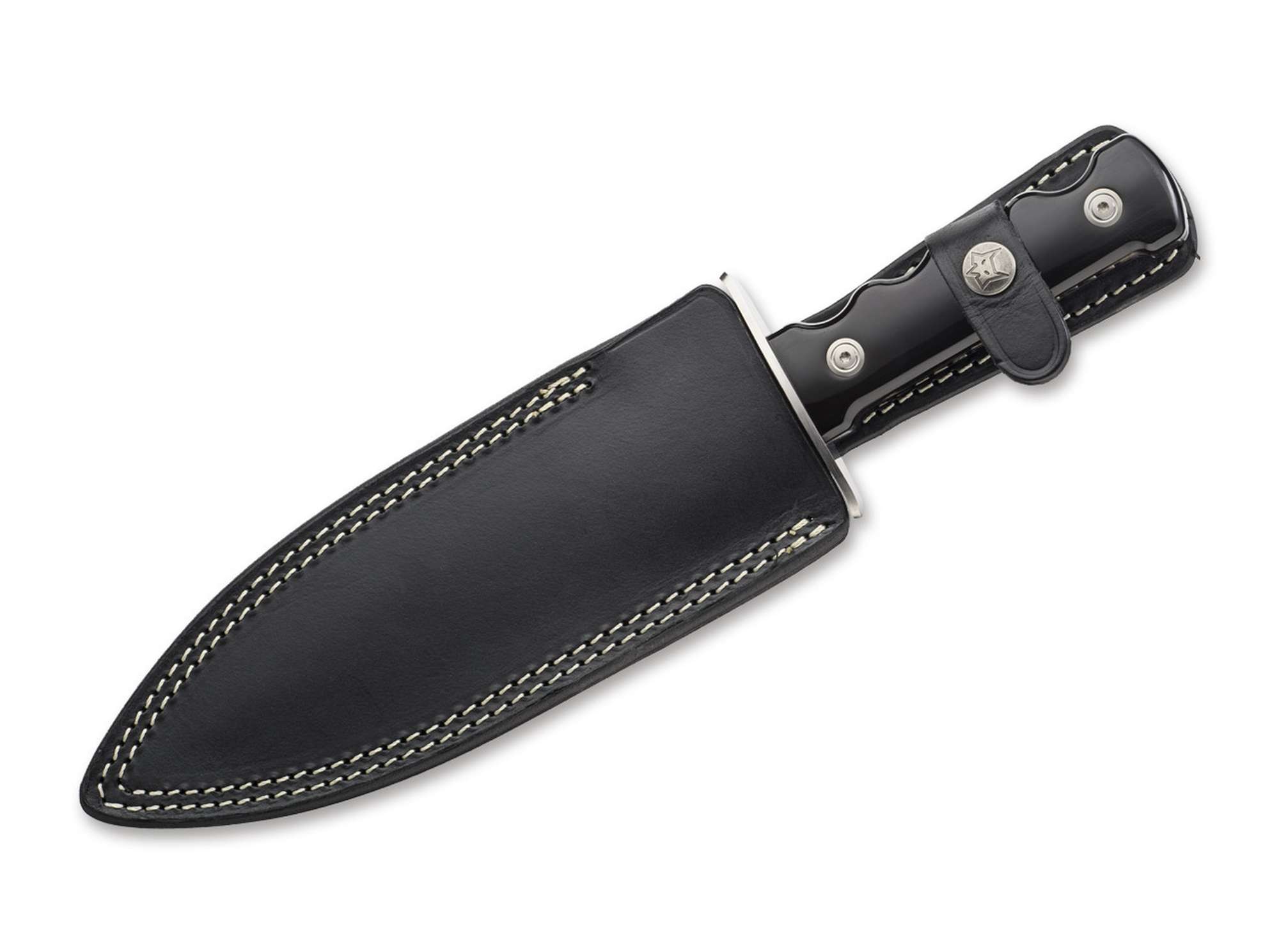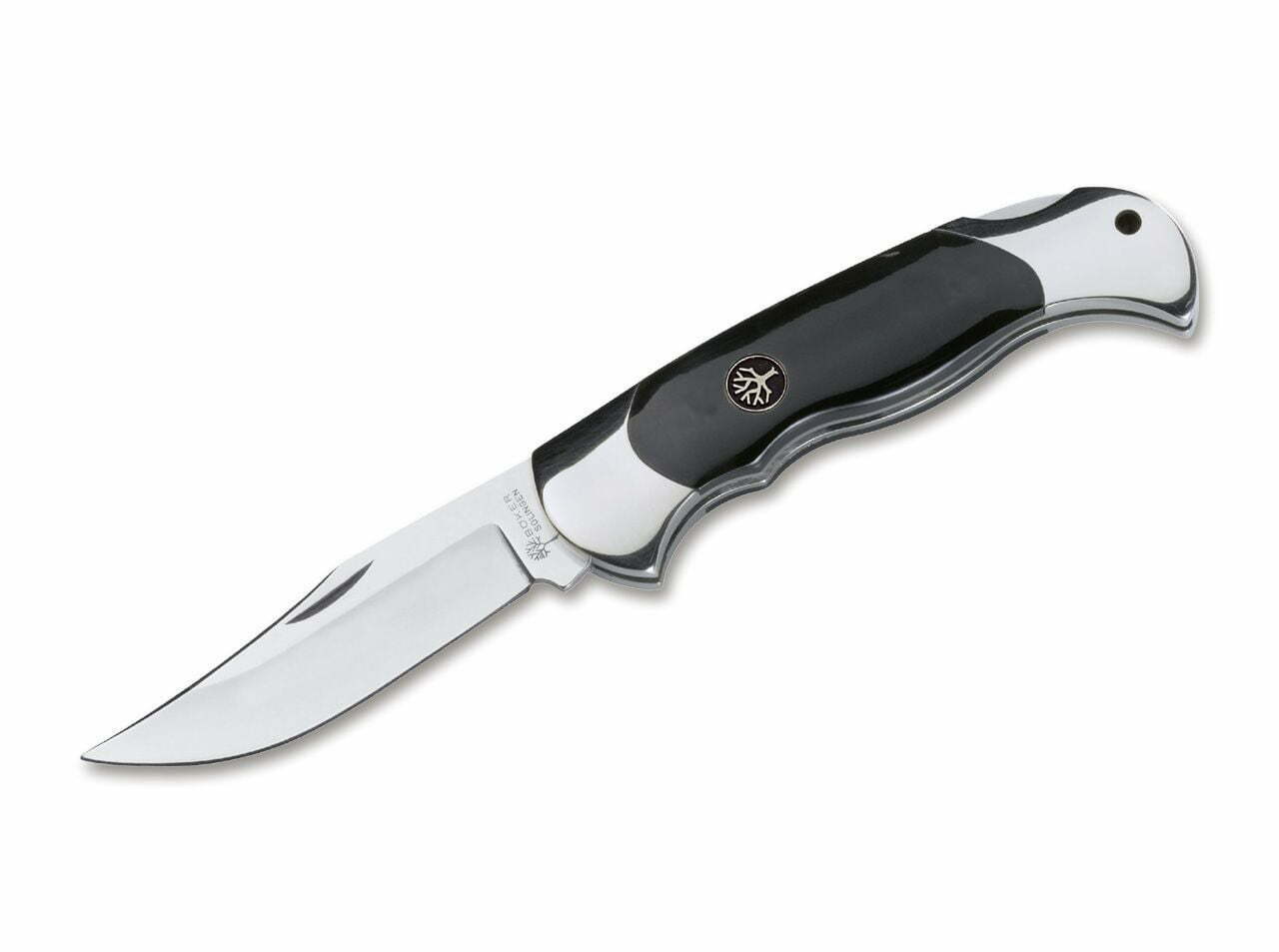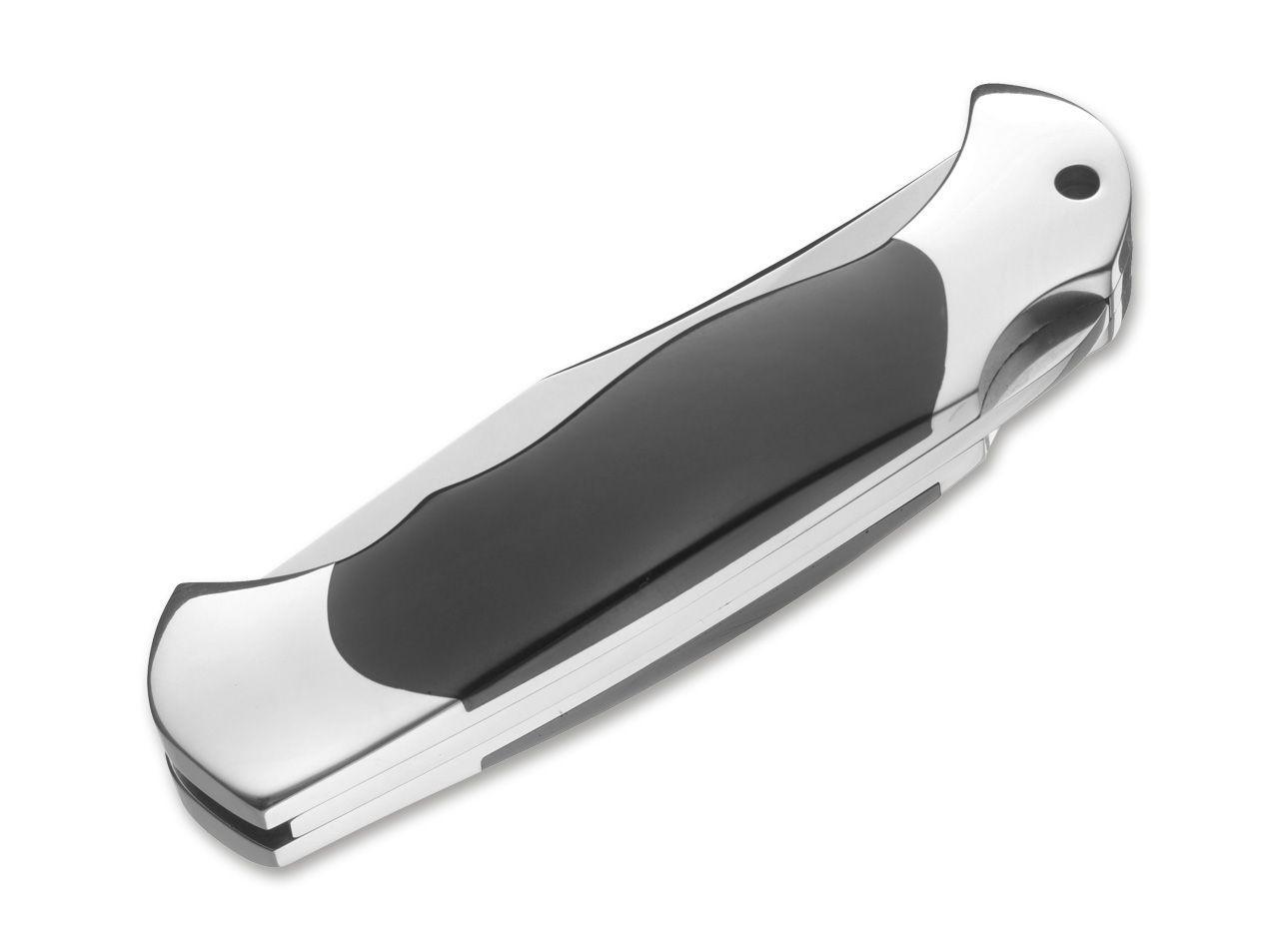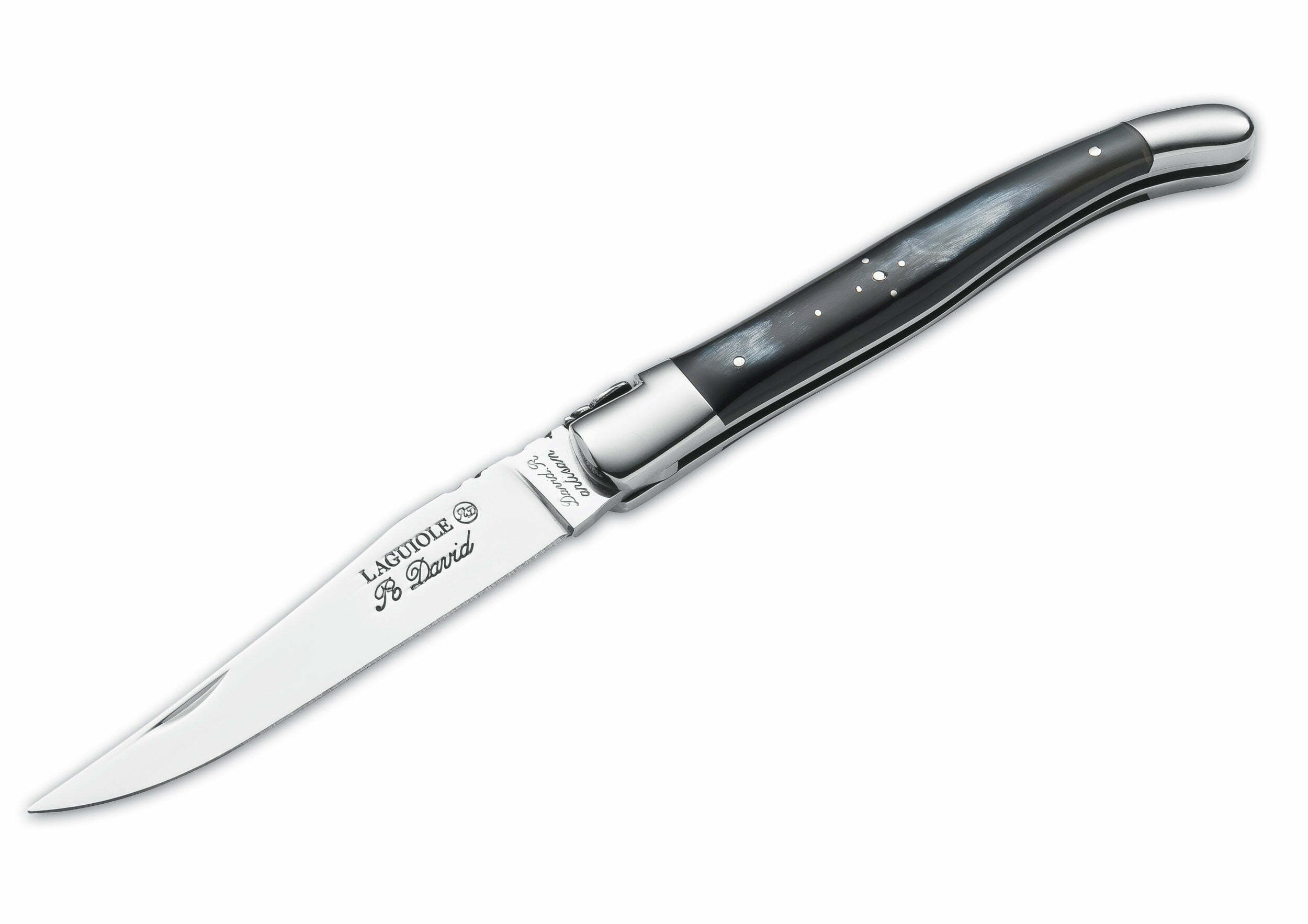In the knife industry, buffalo horn is used for high-quality handle scales.
A horn is the protuberance on the head of the cattle family (Bovidae), a family of ruminants that includes buffaloes. It is a hollow casing sitting on top of a cone-shaped bone. Experts assume that the horn of buffaloes and other cattle developed for the purpose of defense in the course of the evolutionary process. Unlike the antlers of pronghorns, cattle horns are not branched but possess only one point. They are also not shed and renewed annually. Cattle horns grow throughout the animal’s lifetime and do not regenerate if they break or sustain damage. Like all cattle horns, the buffalo horn is a by-product of the hunt and slaughter of these animals. No animal has to die just for the horn.
Buffalo horns are one-of-a-kind, and each buffalo horn has its own individual coloring – from white to gray to dark brown. The color of the horn is determined by its mineralization. Each animal also has individual horn patterns. The textures and patterns of the deeper horn layers can be revealed during processing. The texture of the buffalo horn as such doesn’t say anything about its quality, but is simply a product of the animal\’s living conditions. The horn of animals living in the wild is often very finely textured and hard. Buffalo horn is harder and denser than most woods. Just like wood, it can be carved, sawed, sanded, polished and turned. Horn is very hard-wearing. It is not very resistant to pulling and bending but can withstand very high pressure.
Thanks to its high pressure-resistance, buffalo horn has long been used for weaponry, e.g. as reinforcement of medieval crossbows. Its good mechanical properties and interesting coloring make buffalo horn a popular material for elegant handle scales. Horn should be oiled regularly.

Showing all 3 resultsSorted by popularity

